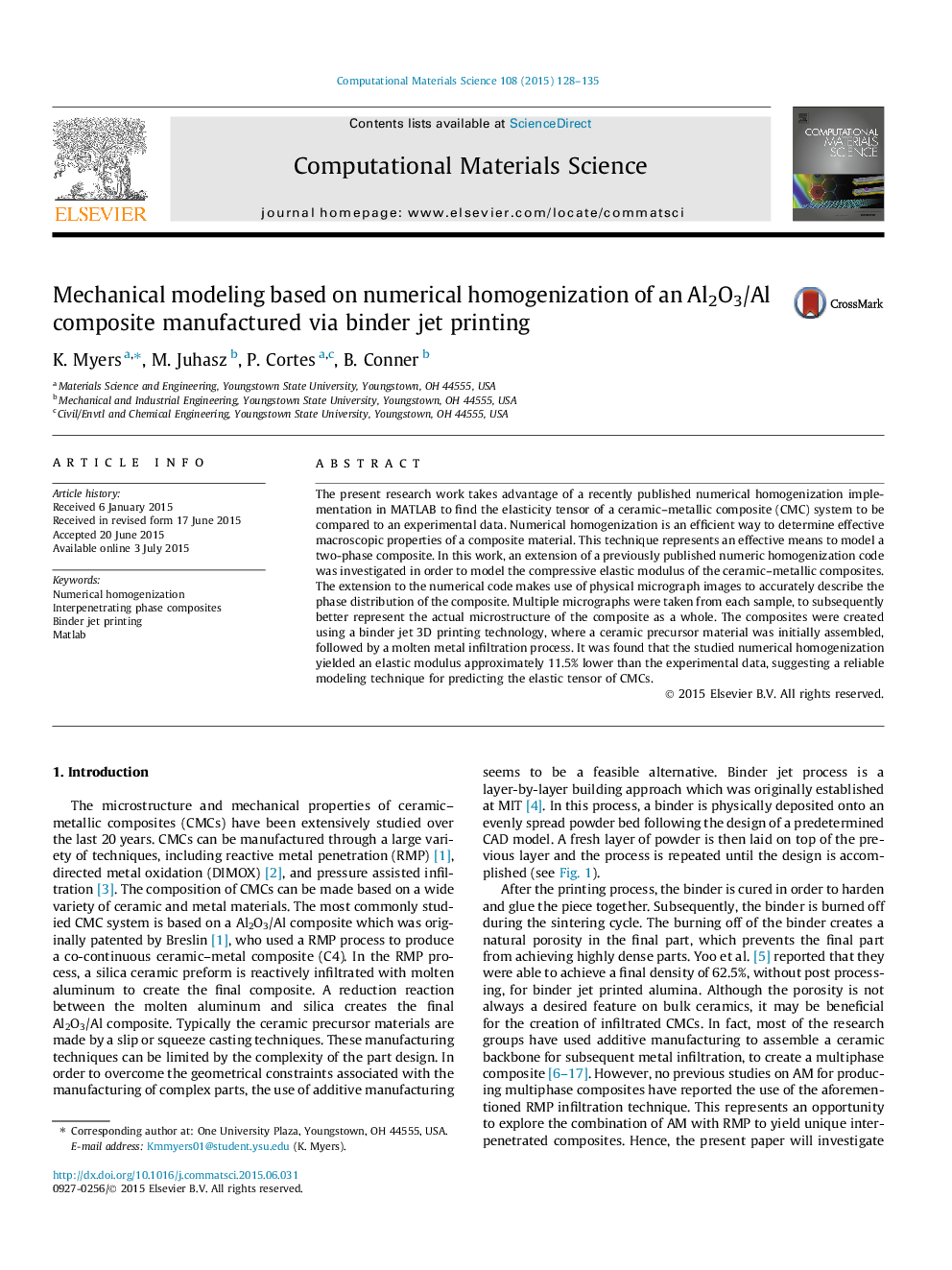| Article ID | Journal | Published Year | Pages | File Type |
|---|---|---|---|---|
| 1560175 | Computational Materials Science | 2015 | 8 Pages |
•Presents micrographic extension to previously published homogenization MATLAB code.•This extension was used to compare numerical results to experimental data.•Results are less than 15% difference between computational and experimental data.
The present research work takes advantage of a recently published numerical homogenization implementation in MATLAB to find the elasticity tensor of a ceramic–metallic composite (CMC) system to be compared to an experimental data. Numerical homogenization is an efficient way to determine effective macroscopic properties of a composite material. This technique represents an effective means to model a two-phase composite. In this work, an extension of a previously published numeric homogenization code was investigated in order to model the compressive elastic modulus of the ceramic–metallic composites. The extension to the numerical code makes use of physical micrograph images to accurately describe the phase distribution of the composite. Multiple micrographs were taken from each sample, to subsequently better represent the actual microstructure of the composite as a whole. The composites were created using a binder jet 3D printing technology, where a ceramic precursor material was initially assembled, followed by a molten metal infiltration process. It was found that the studied numerical homogenization yielded an elastic modulus approximately 11.5% lower than the experimental data, suggesting a reliable modeling technique for predicting the elastic tensor of CMCs.
Graphical abstractFigure optionsDownload full-size imageDownload as PowerPoint slide
